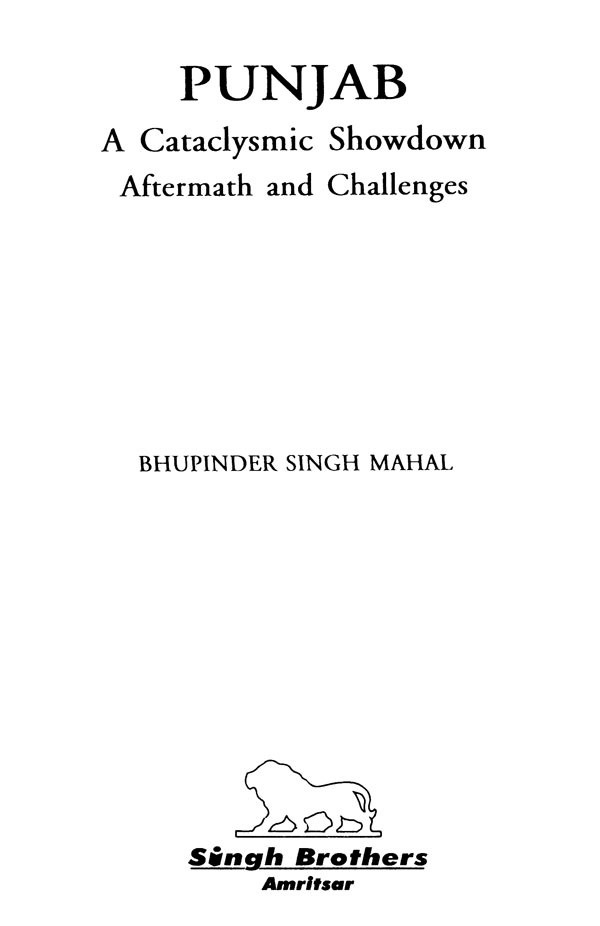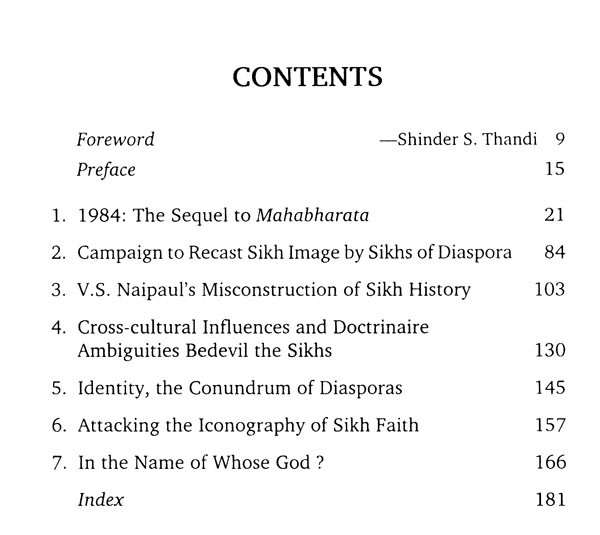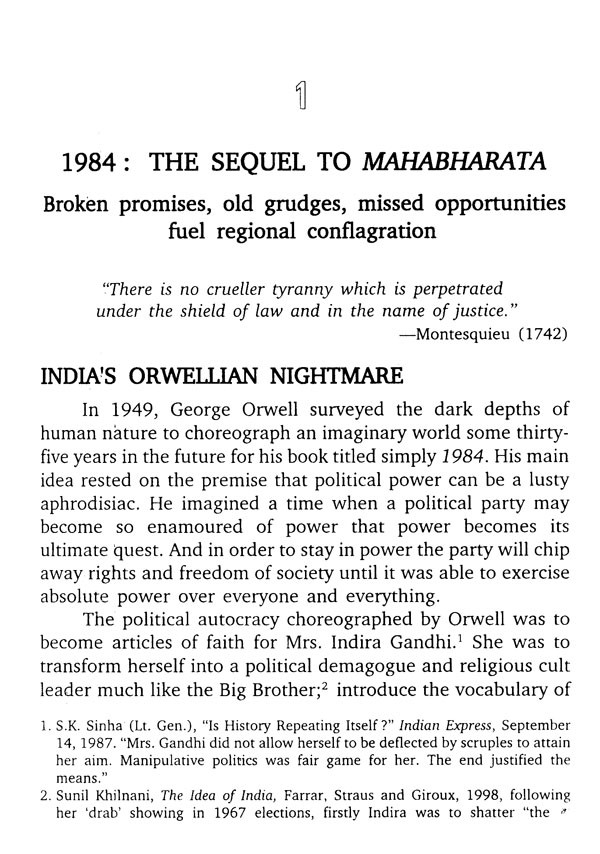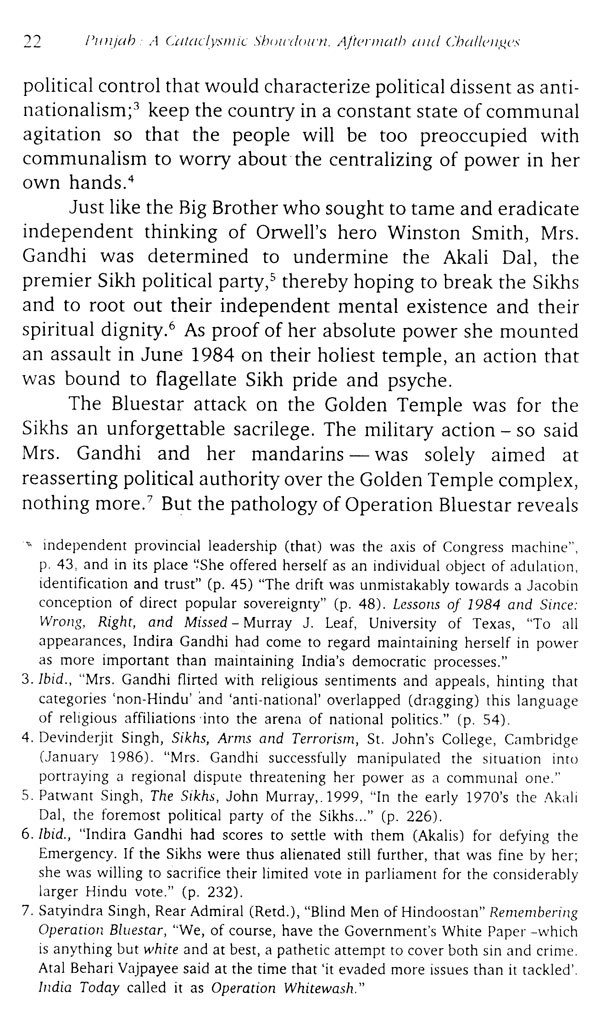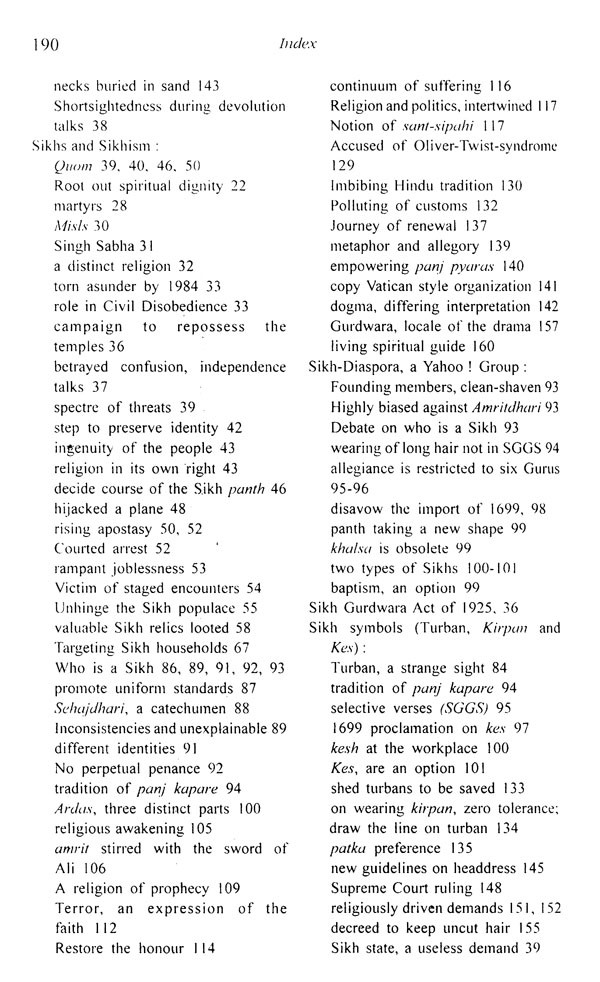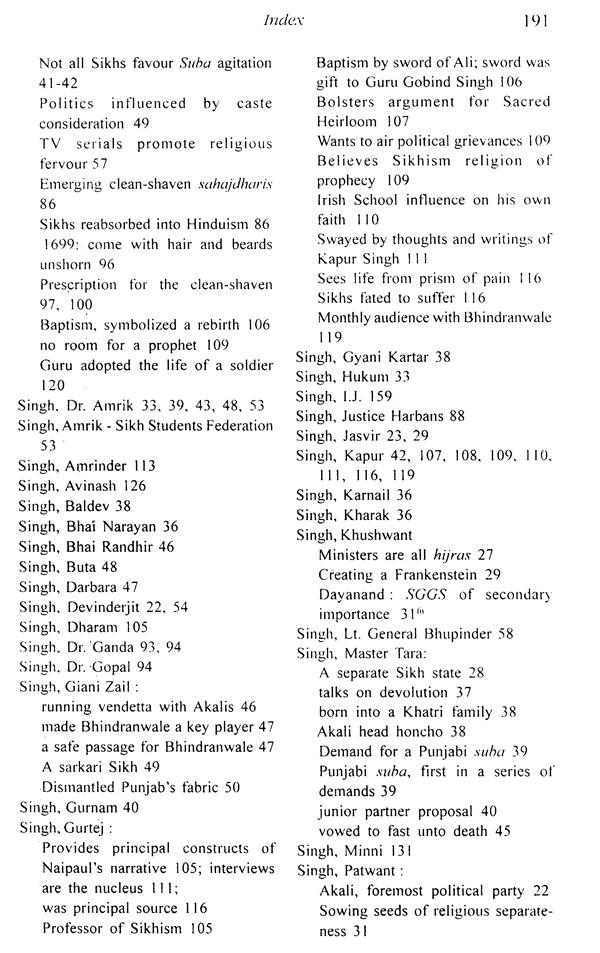
Punjab- A Cataclysmic Showdown (Aftermath and Challenges)
Book Specification
| Item Code: | UAZ844 |
| Author: | Bhupinder Singh Mahal |
| Publisher: | Singh Brothers, Amritsar |
| Language: | English |
| Edition: | 2009 |
| ISBN: | 9788172054175 |
| Pages: | 192 |
| Cover: | HARDCOVER |
| Other Details | 9.00 X 6.00 inch |
| Weight | 430 gm |
Book Description
The author surveys the aftermath of the showdown when in a brief defining moment Sikhs coalesced into a rarely occurring united front (a gaum) and how that shining instant wasted away with the changing contours of political landscape, Sikh identity, didactic approach and doctrinal ambiguities.
Post-1984 some flawed notions of Sikh religion have gained currency and by way of illustration the author points out Nobel Laureate Naipaul's misconstruction of Sikh history and religion in the book India: A Million Mutinies Now and Gurpreet Kaur Bhatti's attack on Sikh iconography in her controversial play Behzti (dishonour).
He also examines the predicament of the Sikhs of Diaspora who face the twin risks of ensuring their right to wear turban in the workplace and avoiding cross-cultural influences likely to hybridize their religious traditions.
He has lived and or worked on five continents. His international manifold, experience has provided him with a platform to promote multiculturalism in Canada. From 1990 to 1994 he served on the Canadian Multiculturalism Advisory Committee, a body responsible for policy development in the elimination of barriers to achieve social, cultural and economic equality for all Canadians.
Since 1997 he has been playing a very proactive role in the health care arena: serving four years as Vice Chair of a leading health provider organization and by serving on the Council of the College of Physiotherapists, both Order-in-Council appointments by the Ontario government.
In March 2009 Mr. Mahal was appointed Chairperson, Employment Insurance Board of Referees (a Governor-in-Coucil appointment). The legislatively prescribed Board is a first-level, independent, administrative tribunal mandated to provide fair and impartial quasi-judicial hearings of appeals of Employment Insurance decisions.
In 2003 he was awarded the Queen's Golden Jubilee Medal, created to mark the 50 anniversary of the accession of Queen Elizabeth ll to the throne, for contribution to Canada, to the community and to fellow Canadians.
In 2007 he was awarded Council Award by the College of Physiotherapists of Ontario in recognition of significant contributions ensuring the physiotherapists provide high quality, competent and ethical services that protect the public interest.
One would have thought that many of the preceding issues had been well and truly settled with publication of Bhai Kahn Singh Nabha's Hum Hindu Nahin during the Singh Sabha Movement, the success of Gurdwara Reform Movement and due to assurances given to Sikhs at the time of Partition. But this perception could not be farther from the truth in the minds of many Sikhs. As a minority community in a Hindu-dominated country, Sikhs continue to be ever fearful of being absorbed by the boa constrictor of Hinduism.
Wave after wave of nomadic and pastoral people of the central Asian steppe came. First to arrive were the Aryans, then came the Scythians followed by the White Huns. Each wave settled down or moved onwards to other regions to the south or eastwards towards the Indo-Gangetic plains.
Then the invaders came, not to settle but to colonize. Alexander the Great was the first to invade but was forced to turn back when his troops refused to cross Beas. Much later, when Islam was in its ascendancy, the Pashto Afghan battled their way to establish their sultanate in Delhi. Hordes after hordes of Afghan plunderers followed and left with their booty.
The paradigm shift came when the descendants of Genghis Khan, competing for central Asian hegemony, drove the loser Babur into India to establish the Mughal dynasty. At about same time Guru Nanak denounced idol-worship, superstitions, empty rituals and preach the Doctrine of One God and truthfulness.
The message was pure rapture for the people of Punjab who embraced the new dogma and came to be known as Sikhs of the Guru. The Gurus were to inculcate in their Sikh followers a sense of egalitarianism, brotherhood, valour, sacrifice, pride and service to mankind.
**Contents and Sample Pages**
